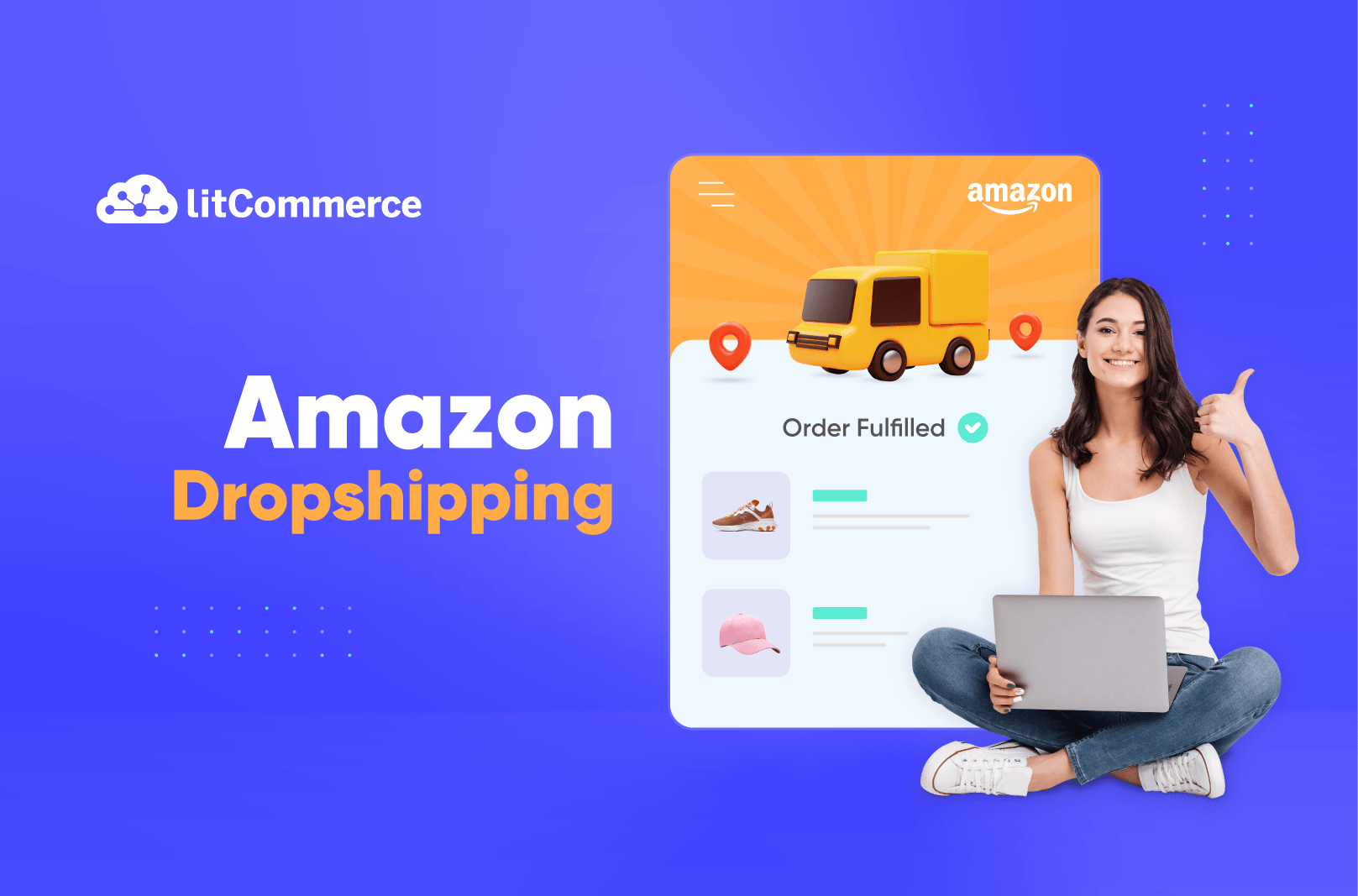Amazon dropshipping can be an enticing opportunity to kick-start your online business. It lets you focus on marketing while a third-party supplier manages fulfillment. However, it’s crucial to follow Amazon’s dropshipping rules for success. In this article, we’ll cover everything you need to know how to start dropshipping on Amazon, including 5 steps:
- Step 1: Register an Amazon seller account
- Step 2: Research profitable products
- Step 3: Find Amazon dropshipping suppliers
- Step 4: Do Amazon keyword research
- Step 5: Create your Amazon product listing
Ready to kickstart your Amazon dropshipping business? Keep on reading.
What is Dropshipping on Amazon?
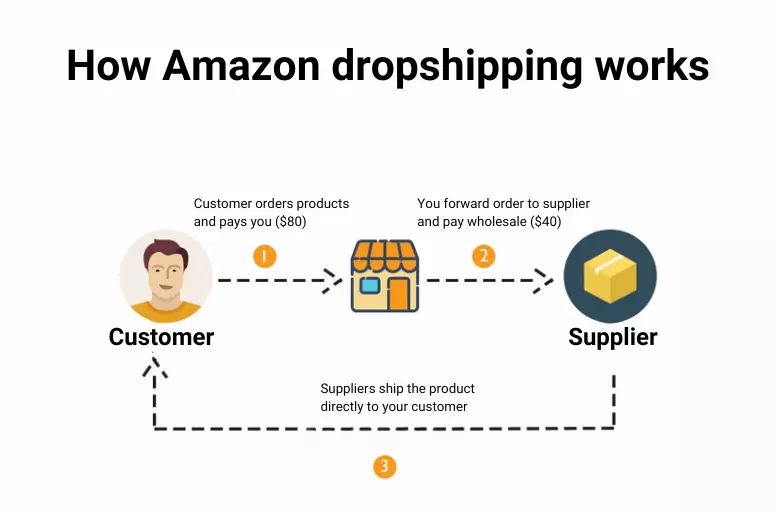
Before learning how to dropship on Amazon, let’s understand its basics.
Amazon dropshipping is a popular business model where sellers put products on sale without keeping them in stock. When a sale occurs, the seller gets it from another supplier, who sends it straight to the buyer.
Dropshippers often reposition and rebrand the products they sell as their own, ensuring that the end consumer is unaware the goods are shipped directly from the manufacturer. This practice is widely popular on marketplaces like Amazon, eBay, Etsy or even TikTok Shop.
Is It Legal to Dropship on Amazon?
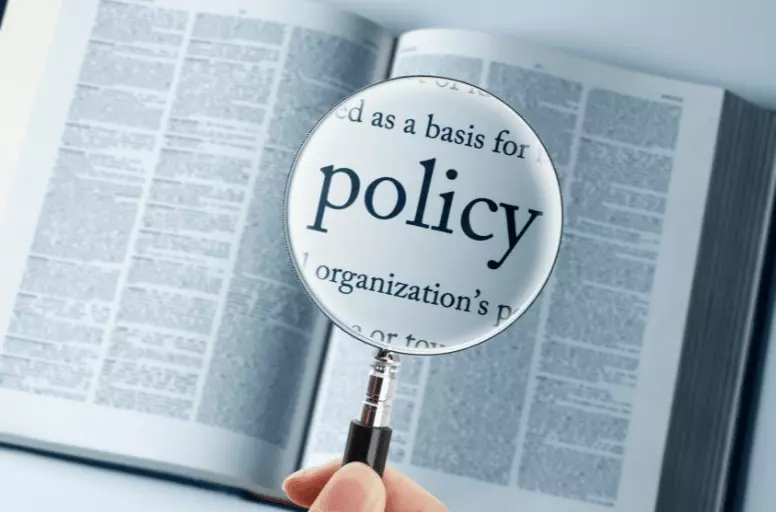
Some may wonder, “Does Amazon allow dropshipping?” The answer is yes. Dropshipping is permitted on Amazon as long as you stick to these guidelines:
- Be the exclusive seller of your products.
- Ensure your business name appears on invoices, packing slips, and other item details.
- Remove any info about third-party sellers before shipping to prevent confusion.
- Handle returns on your end.
- Adhere to your seller agreement and Amazon’s dropshipping policy.
Here’s an example of what Amazon doesn’t allow for dropshipping:
You list an espresso machine on your Amazon store. A customer buys it, and you order the same product from Walmart.com, using the Amazon customer’s shipping details. Then, the Amazon customer gets a package from Walmart.
This confuses and frustrates customers who expect Amazon, not Walmart.
How Much Does it Cost to Dropship on Amazon?
Some may wonder how to dropship on Amazon without money.
To start your Amazon dropshipping business, you need to pay two types of fees: selling plan fees and referral fees.
For beginners, you can start with the Individual selling plan at $0.99/item sold. Or you can also opt for the Professional account at $39.99/month, no matter how much you sell.
The referral fees are different between categories, typically from 8%-45%. The lowest referral fees are in categories like appliances and electronics. As fees are a percentage of the total price, the actual cost varies based on item value.
Is Amazon Dropshipping Profitable?
Yes, dropshipping on Amazon can still be lucrative, even though many are already doing it. You can earn between $3,000 and over $50,000 monthly from Amazon dropshipping, depending on your products, niche, and market. For example, Reddit user Thehighgroundgang reports making $3K per month in profit from $10K in revenue.
Pros and Cons of Dropshipping on Amazon
Like any other business way, dropshipping on Amazon has good and not-so-good sides. Before diving into How to start dropshipping on Amazon, let’s have an overview of the advantages and the challenges of this business model.
Pros of Amazon dropshipping
Amazon dropshipping is great for new entrepreneurs due to its many benefits.
- Low capital requirement: It needs less money to start compared to traditional methods, like retailing or wholesale. You can make money without buying and handling products.
- Diverse product categories: With over 30 categories, Amazon facilitates the sale of products across various niches. This allows sellers to tap into diverse markets, provided they steer clear of restricted categories.
- Quick setup: With Amazon dropshipping, you don’t need to store inventory. Once you find suppliers, you can start selling on Amazon.
- Intensive market exposure: Amazon’s popularity means a huge customer base for your products if you choose the right ones and suppliers.
- Screened dropshipping suppliers: Amazon purchases products in bulk mainly from reliable European suppliers, ensuring quality. Suppliers must pass strict checks for durability and safety before their products are sold on Amazon, guaranteeing that new sellers offer only the best products.
Cons of Amazon dropshipping
You know how to start dropshipping on Amazon, and that it comes with appealing advantages. However, there are some drawbacks to consider:
- Lack of quality control: You can’t oversee the product quality shipped to customers; it relies on your supplier. So, it’s crucial to choose partners carefully to address this.
- Limited customization: Amazon’s restrictions limit customization, placing branding and marketing under their control.
- Fewer customer connections: Establishing lasting customer relationships can be challenging, as Amazon prioritizes product sales over brand loyalty.
- Upfront investment: Meeting Amazon’s fulfillment criteria necessitates an upfront investment in supplier products for inventory. So, be prepared for this financial commitment to starting Amazon dropshipping.
Amazon FBA vs Dropshipping are two popular business fulfillment methods. Read this Amazon FBA vs Dropshipping comparison to choose a suitable one.
How to Start Dropshipping on Amazon in 4 Steps
Now that you’ve got the lowdown on Amazon dropshipping, let’s learn how to start a dropshipping business on Amazon:
Step 1: Register an Amazon seller account
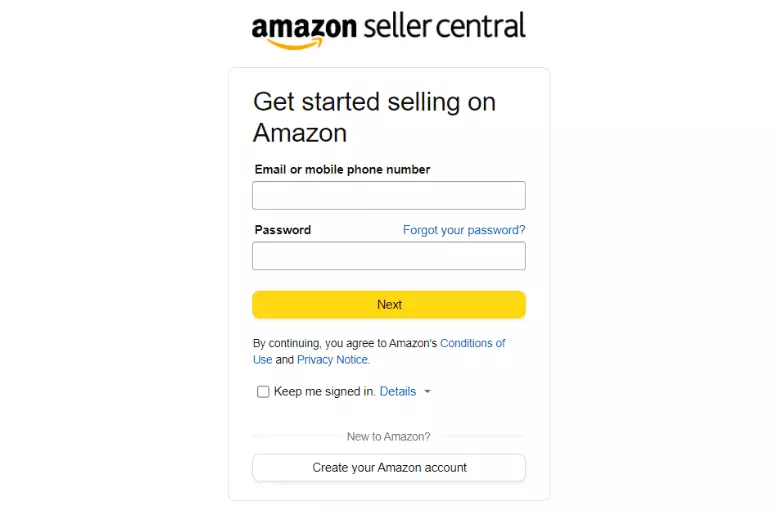
To start dropshipping Amazon, you’ll need to set up your Amazon seller account. Simply go to sellercentral.amazon.com, and click “Sign Up.” Here, you’ll be required to fill in your business information. So, prepare these details for the signup:
- Business email
- Government ID
- International credit card
- Phone number
- Tax info
- Bank account to receive sales
Step 2: Research profitable products
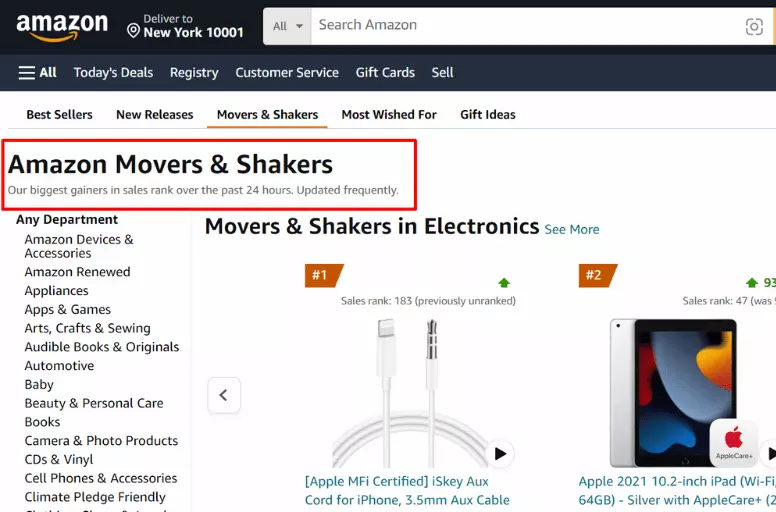
Once you have your Amazon seller account, it’s time to pinpoint the right product to dropship.
You can use tools like Product Opportunity Explorer on Seller Central to discover items in high demand but with low competition. Here are some tips for your search:
- Discover trends: Uncover hot items using Amazon’s Best Sellers list, which features the top 100 products and updates hourly. You can also explore the daily updated Movers and Shakers list for dynamic trends.
- Define your brand: Decide your brand identity by choosing a niche. For starters, we recommend keeping things simple. Some low-maintenance, easy categories to stick to include housewares, sports & outdoors, patio, and home & garden.
- Assess the competition: Be wary if big brands dominate or numerous sellers offer the same products; competing may be challenging.
Step 3: Find Amazon dropshipping suppliers
Now that you’ve got product ideas, it’s time to find ideal Amazon dropshipping suppliers.
You can pick a supplier well-versed in Amazon’s dropshipping rules for seamless shipping and returns. Every supplier has specific demands, so check if they match your business needs.
Also, be in the know – some may have monthly fees or minimum order requirements, potentially costly for beginners.
Step 4: Do Amazon keyword research
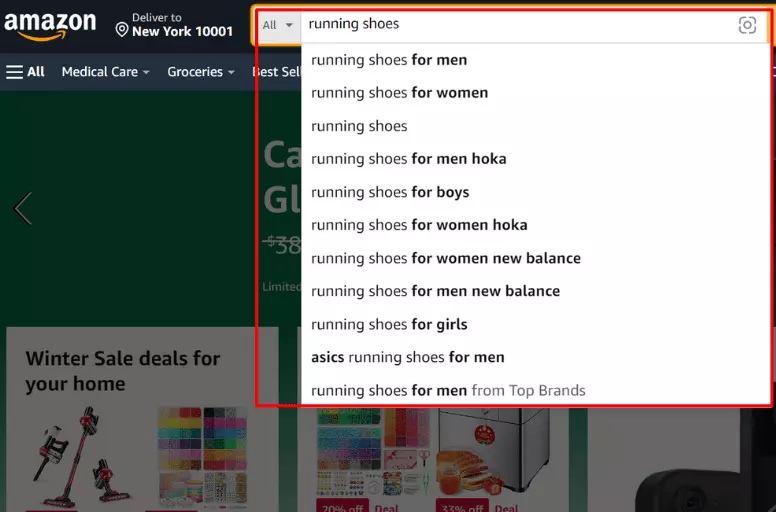
Keyword research is a powerful tool for amping up your sales. You first need to target keywords related to your product, ideally with low competition, meaning fewer brands are vying for the same spot. Then, you can optimize your product listings to soar in search results.
A simple yet effective strategy for Amazon keyword research is to use Amazon’s search bar. Start by typing a keyword, and you’ll get a menu with more ideas. Additionally, try keyword tools like Helium 10, JungleScout, Sellics, etc., to discover trending keywords.
Step 5: Create your Amazon product listing
Now you’ve got a product idea, a supplier in place, and a list of profitable keywords. It’s time to craft your Amazon product listing!
- Add your product: In Amazon Seller Central, hit “Add products” and choose “I’m adding a product not sold on Amazon.”
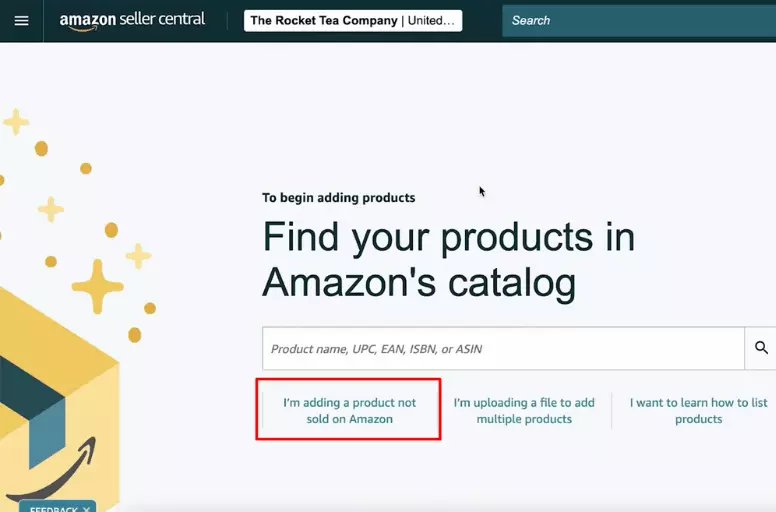
- Pick a category: Select the category for your products.
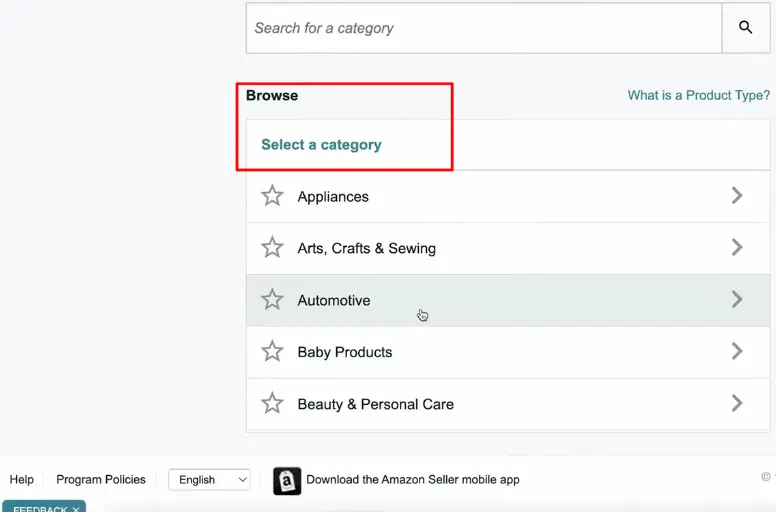
- Detail your product: Fill in tabs for Product Identity, Offers, Keywords, Images, Description, Compliance, Vital Info, Variations, and More Details.

- Save and finish: Click “Save and finish” when your product details are complete.
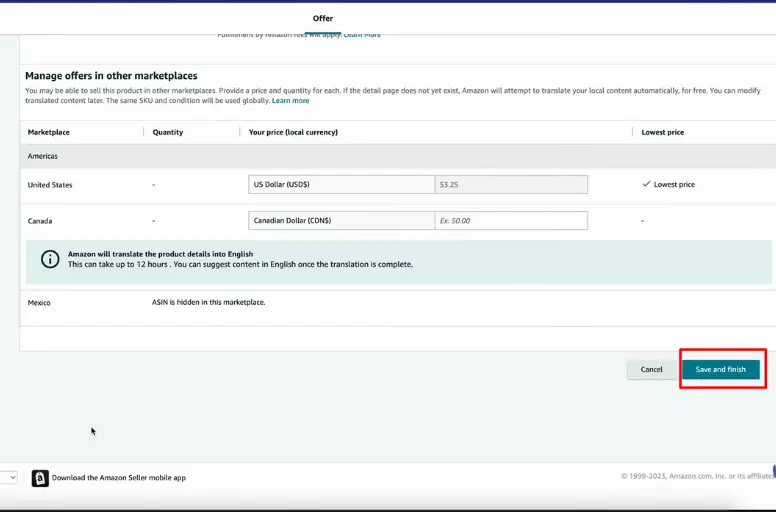
Congrats! Your listing is live, and you’re all set to kick off those sales on Amazon.
Bulk List and Optimize SEO for Free with LitCommerce!
With the LitCommerce tool, you can effortlessly list your current store products on Amazon in bulk and optimize SEO listings for FREE.
4 Tips to Succeed When Dropshipping with Amazon
So, now you know how to start dropshipping on Amazon. While it may be easier than some business models, true success requires some extra effort. Here are four actionable tips for dropshipping through Amazon successfully:
- Run Sponsored Product ads
Invest in Sponsored Product ads using Amazon’s cost-per-click model. This boosts your product visibility in search results, especially with a marketing budget.
- Focus on customer experience
It’s always crucial to take responsibility for the customer experience. As a dropshipper, you represent your brand, not Amazon. Clearly communicate your support contact details to avoid confusion and improve reviews and long-term sales.
- Increase your product variety
Don’t rely solely on top-selling products. Instead, offer a variety of long-tail products for maximum profitability. Look for suppliers with extensive catalogs to diversify your offerings and reduce dependence on a few items.
- Get samples
Before listing products, order samples to understand what you’re dropshipping with Amazon. Evaluate the product’s appearance, shipping time, and accuracy compared to descriptions. This firsthand experience will guide your customers’ expectations.
Amazon Dropshipping – FAQs
Yes, dropshipping is allowed on Amazon. However, it’s crucial to adhere to Amazon’s policies and guidelines, ensuring a smooth and compliant dropshipping process. Certainly, dropshipping on Amazon can make money. In fact, 94% of Amazon dropshippers turn a profit. Typically, the profit margin ranges from 10% to 30%, but keep in mind that Amazon charges referral fees on sales. Ultimately, the profit all depends on how much you spend on products, how much you sell them for, and what’s left after Amazon takes its fees. To dropship on Amazon without issues, you need to be the official seller. The seller of record is the one registered to sell the product to the customer. After that, you need to research products, find your Amazon dropshipping suppliers, research keywords, create product lists, and boost sales.
Start Your Amazon Dropshipping Business Now
Now you understand how to start dropshipping on Amazon as we’ve covered the essential steps:
- Stetting up your Amazon seller account
- Sourcing profitable products
- Securing reliable suppliers
- Researching keywords
- Create your Amazon product list
Remember, Amazon dropshipping offers a pathway to entrepreneurship with lower upfront costs, but adherence to Amazon’s rules is key.
Now that you know the ropes, you’re set to turn your business dreams into reality. Begin dropshipping with Amazon and kickstart your e-commerce journey!
Don’t forget to contact us if you need help or have related questions on your Amazon dropshipping journey.

